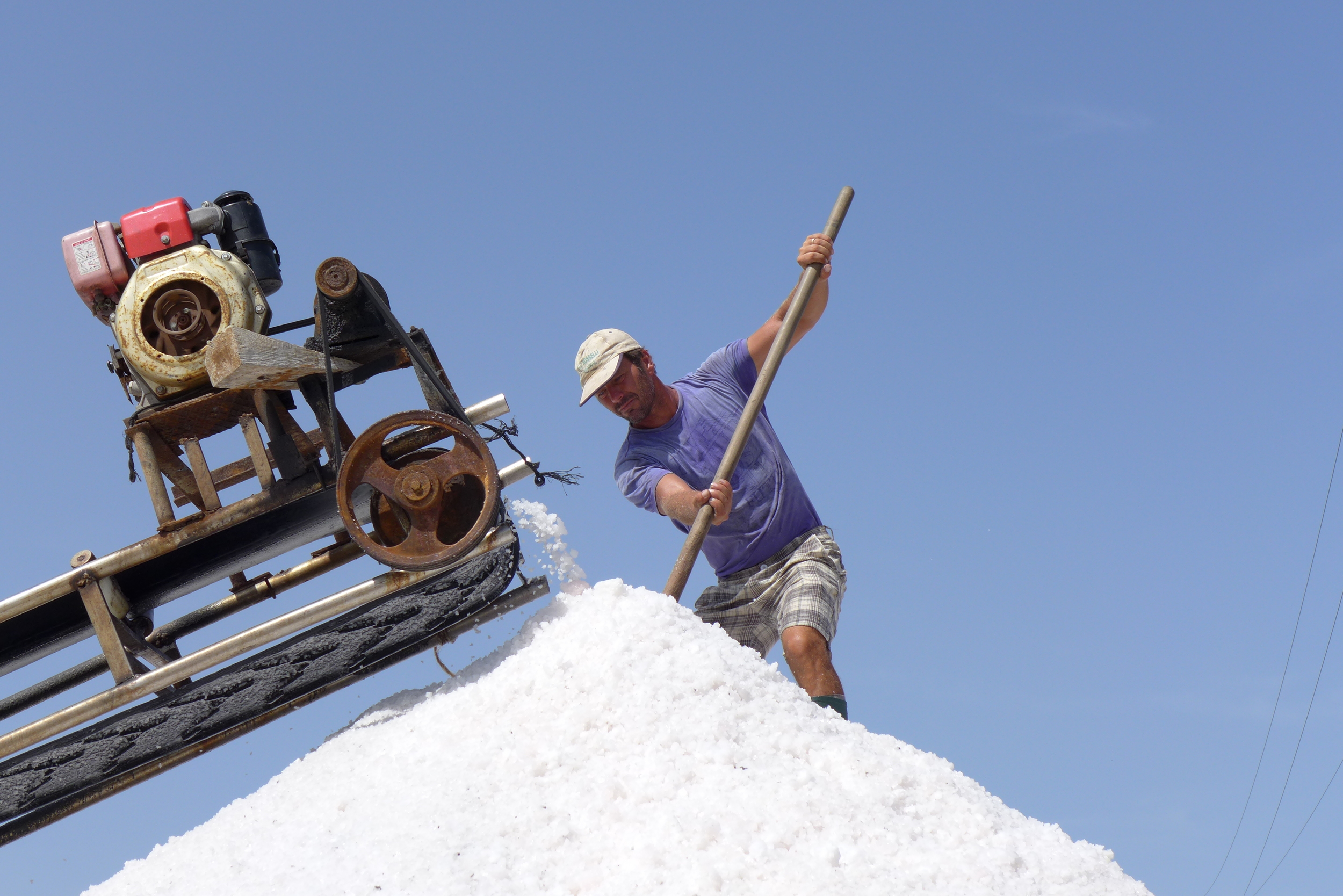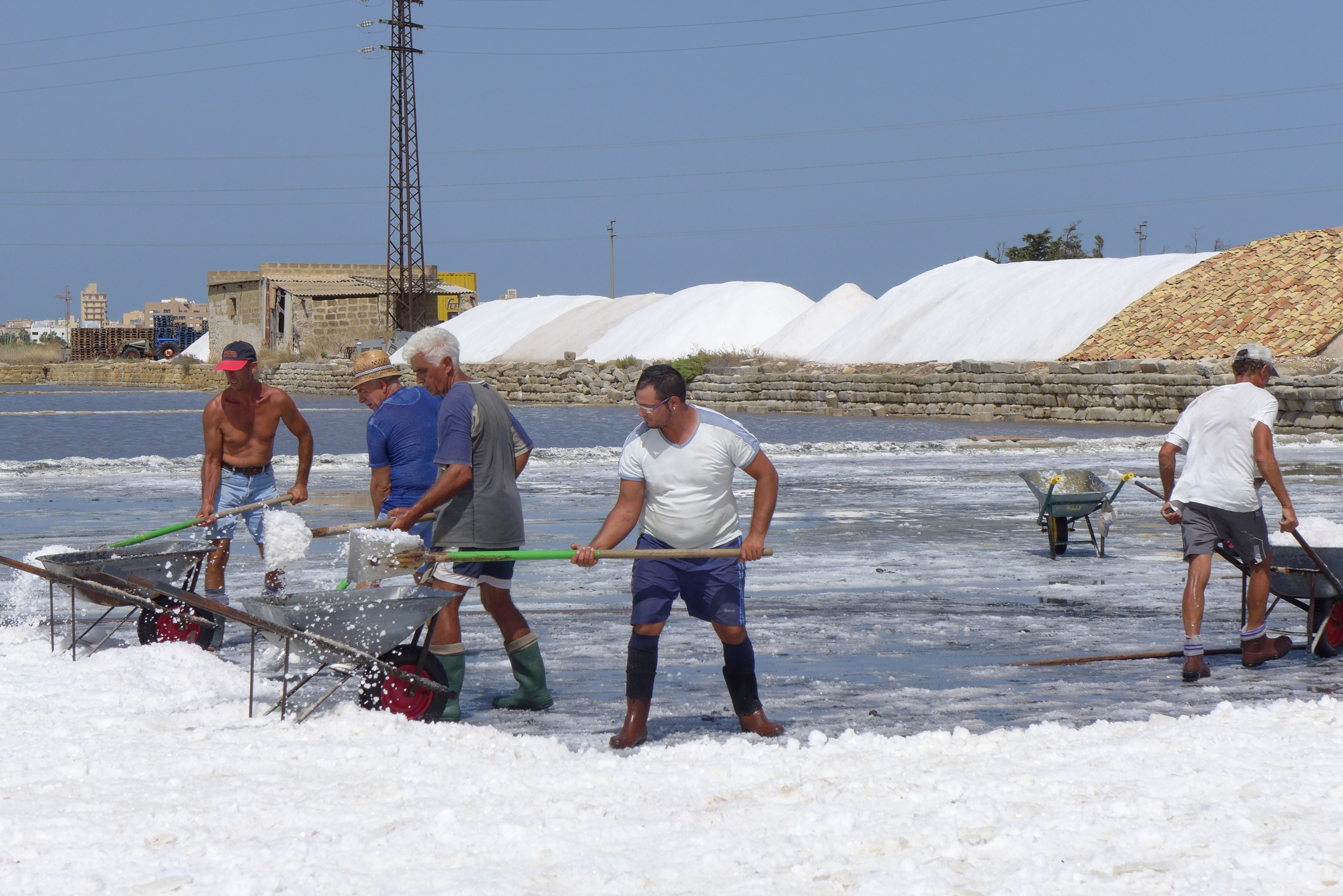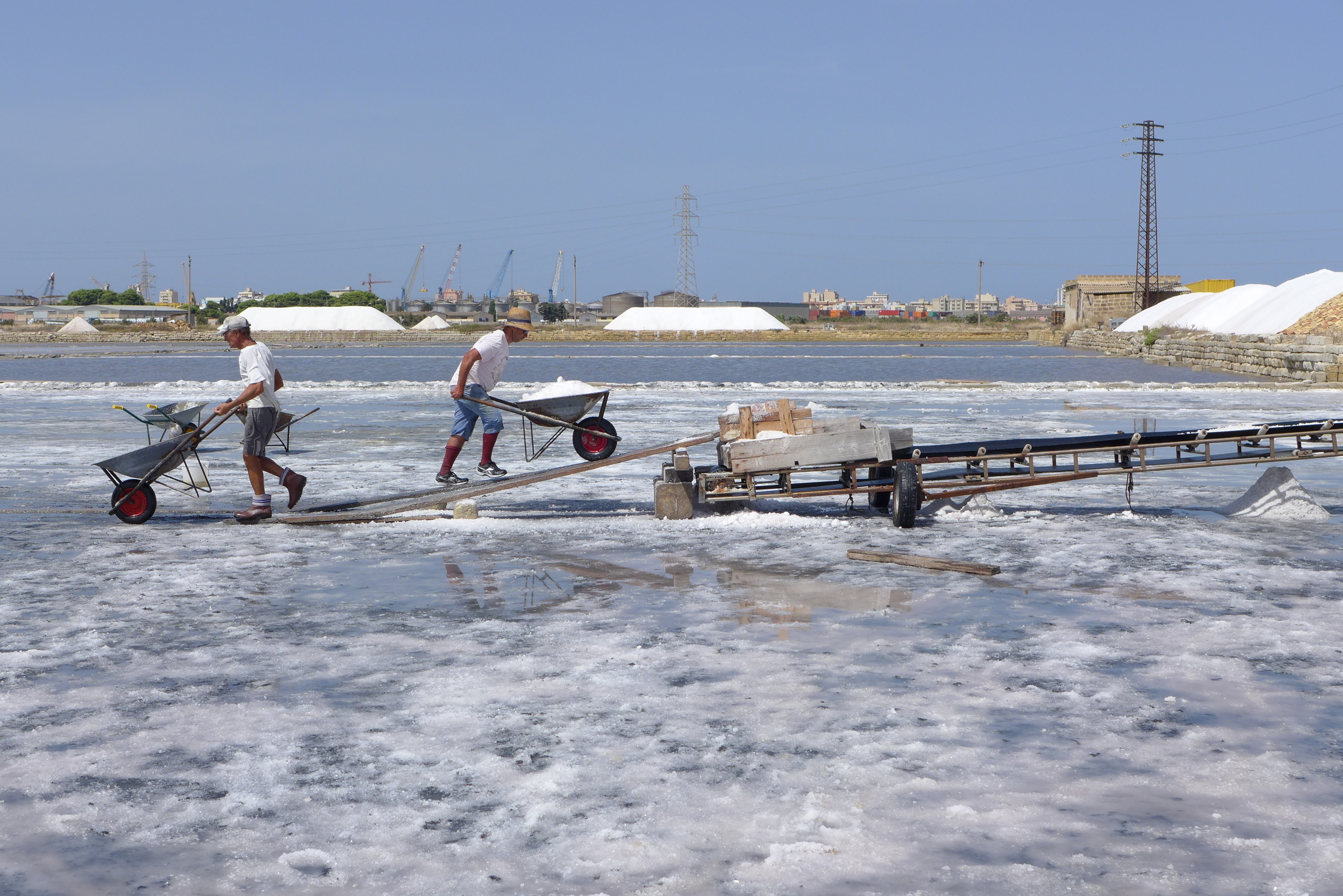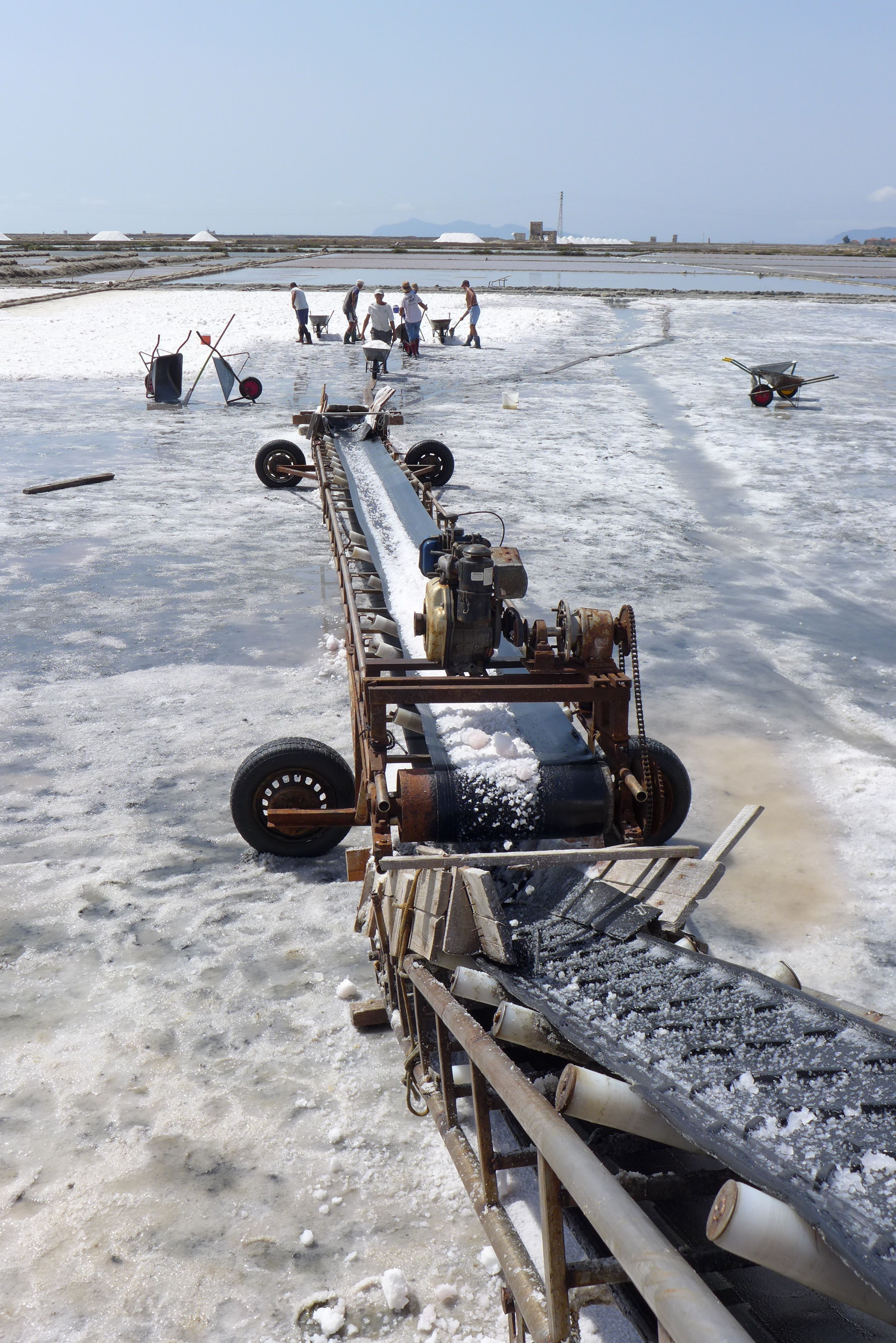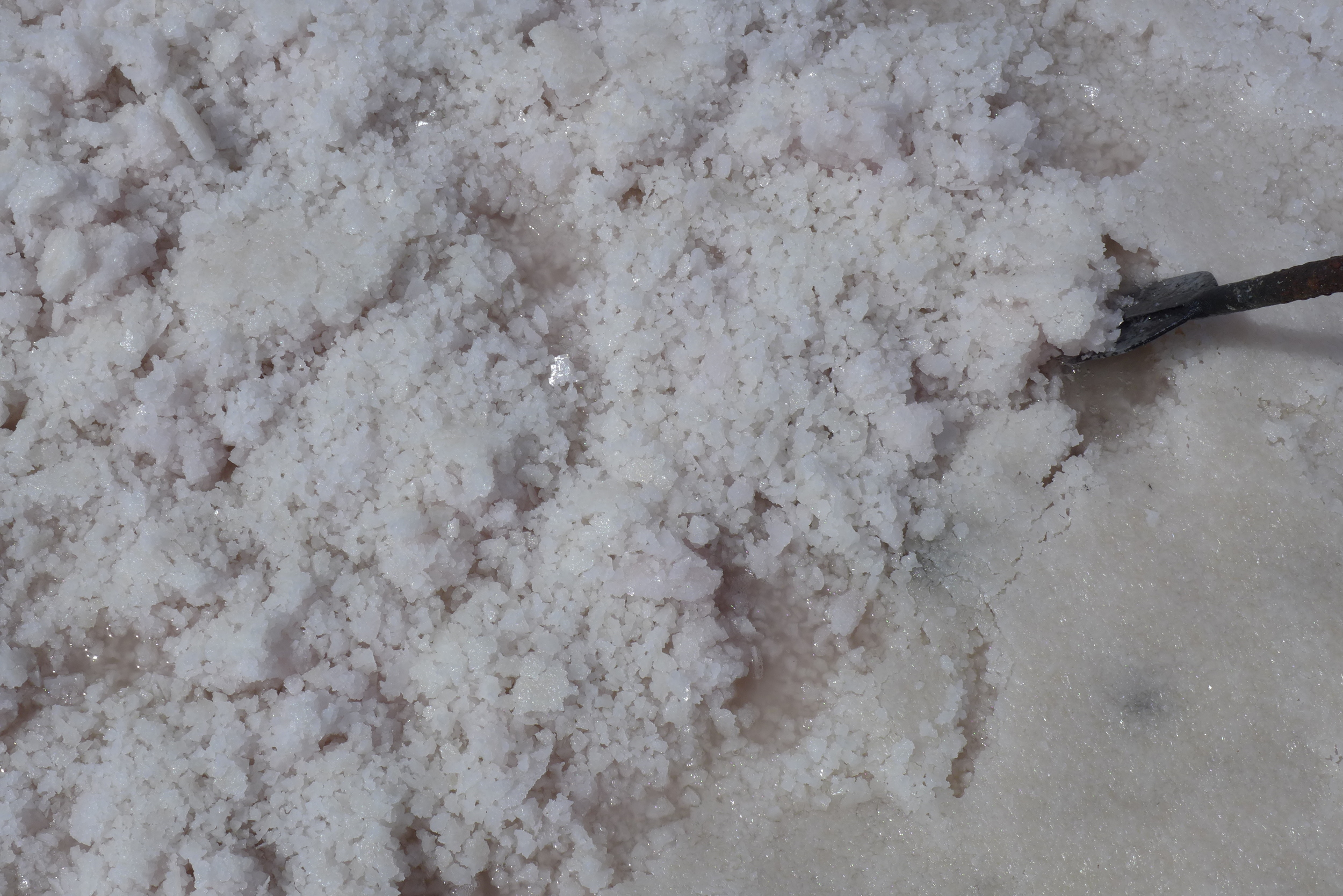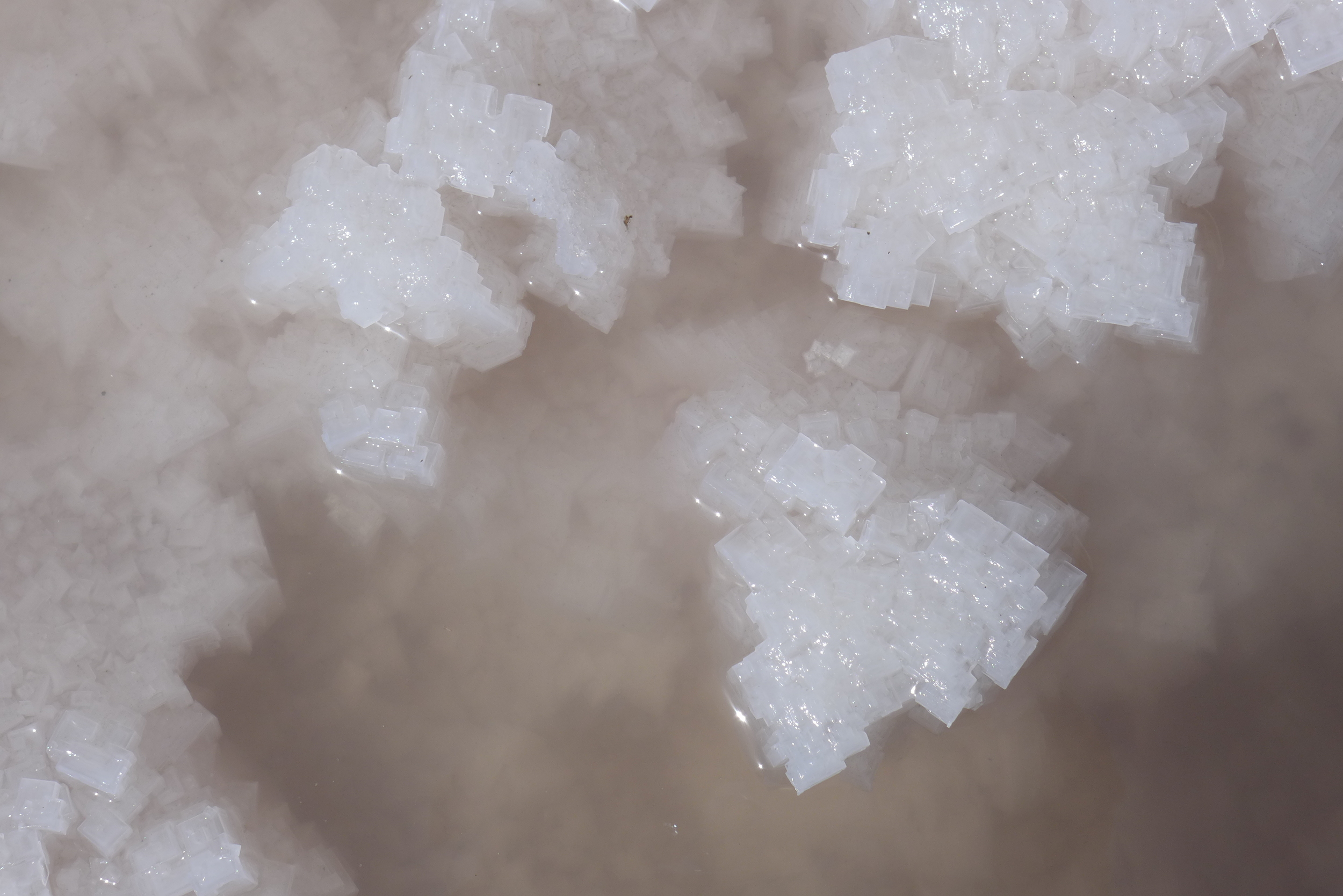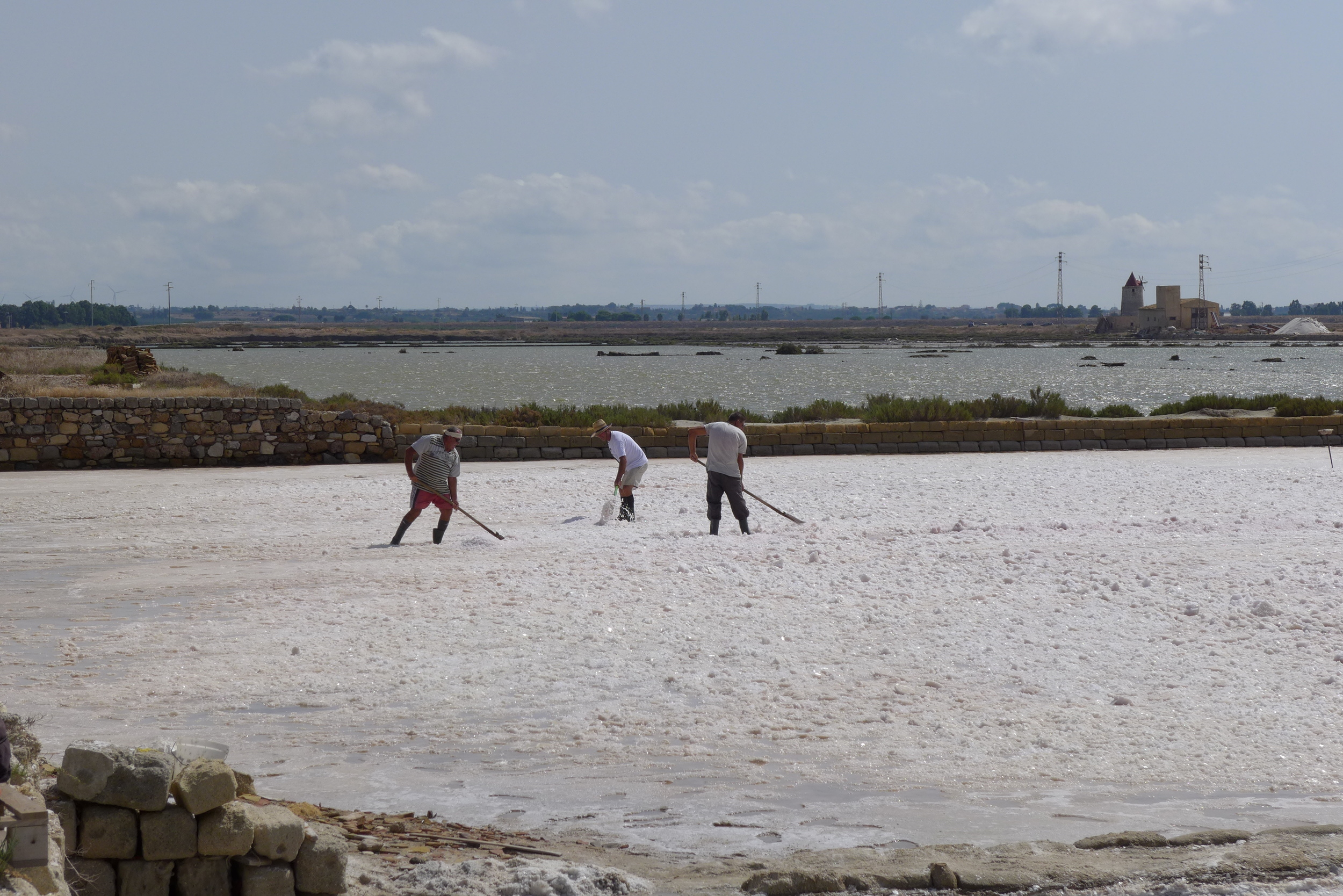An easy way to step up your kitchen game is to make small updates to your everyday pantry items. Start with salt, high-quality olive oil, vinegars, and while you're at it - toss those old dried up spices that have been sitting in there for years. When I cook, I like to know where my ingredients come from. Especially if it means traveling to see how, why and who makes them. Let's talk about sea salt.
Sea salt produced on the west coast of Sicily is some of the best in the world. They have been drying and harvesting salt here for centuries; originally for shipping it north to Scandinavia to be used in salting dried fish. It makes sense really. The climate and location explains it all. Long dry hot summers, the strong warm winds off of Northern Africa, and the high salinity of the Mediterranean are the perfect ingredients for making sea salt. I like the way Sicilians talk about winds, the same way Californians talk about the autumn Santa Ana's. I experienced it for the first time in San Vito lo Capo, a cape in the northwest part of the island. The warm dry "scirocco" blew through and the weather quickly turned from hot Mediterranean summer to a heavy bone-dry Sahara desert. The salinity of the sea is much higher than the Atlantic ocean. Think about swimming in the US and swimming off the coast of Italy. You'll notice right away how easy it is to float around without treading non-stop and all you need to do is lay back and wiggle your toes.
The west coast of Sicily is lined with "saline" or salt pans from Trapani down to Marsala and on the small island of Mothia. Depending on the season, as you drive or bike south from Trapani you'll see a lot of windmills, wide "vasche" basins to collect sea water, and big white pyramid piles of salt. I contacted the "salinaio" salt producer that makes the salt I use in my kitchen to organize a little visit to the pans. I met Salvatore at his office job in a big library in the center of Trapani, I followed him out of the city and down a dusty dirt road to see the salt pans that he works on with his brother, Enzo.
They start the process in April and fill the basins with sea water. As it begins evaporating the water is pumped to other shallow pools but they don't start harvest until September. I was lucky enough to be there at the right moment for all of the action. I took photos from the edge and shouted questions in broken Italian to the men shoveling salt before they let me take off my shoes and jump down there to get a closer look. These are not the hipster rooftop farmers of Brooklyn, they are true contadini: the artisanal farmers and land workers all men between of age of 40-70. They've been doing this job their whole life and it's hard work.
The only machinery used is a pump to help move the water out of the pans while the salt is drying and a conveyor belt to transport wheelbarrows of rock salt off of the pans and up onto the mountains you see from the road. As the water dries up, the top layer of salt becomes thick like a frozen lake. On one side of the pans where the salt is not fully dried up yet, they use a flat spade shovel to break up the salt by digging down and turning it. They dig a moat between the flats to let the water continue to run out as the salt dries on top while the second group of harvesters shovel the broken up salt rocks into wheelbarrows to be moved off of the pans, up the conveyor belt, and onto the mountain to dry before being sifted and crushed.
It's an amazing sight to see the salt workers in action, hand-harvesting something so natural and precious. I still can't believe how much time and work goes into a product that costs $3 a bag. Grab a bag of Sicilian sea salt for your kitchen pantry and you'll never go back. Sale Grosso is the coarse salt to throw in a pot of water for pasta and Fior di Sale is the tiny salt crystals harvested from the top layer of the salt pans, ground very finely for a nice finishing salt on top of special dishes. Luckily for us, the WWF has protected the salt road from Trapani to Marsala so we'll have sea salt for many years to come as long as there are people who want to do the job.



